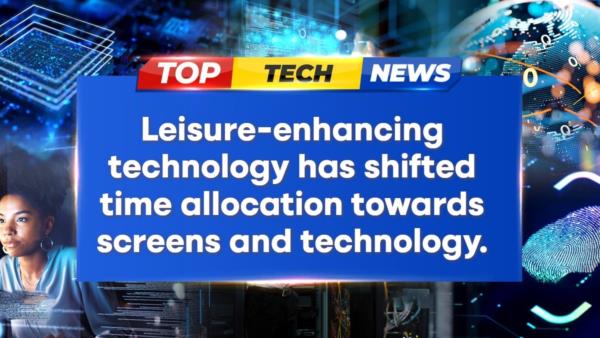
Over the past few decades, there has been a remarkable shift in the nature of economic growth. While traditional advancements focused on improving productivity and accumulating capital, the modern era of innovation is centered around capturing something much more intangible – user attention. With the rise of technology for leisure, such as popular apps like Instagram and TikTok, the economy has been undergoing significant changes.
This phenomenon, known as Leisure Enhancing Technological Change, has had a profound impact on various aspects of our lives. Unlike traditional technological advancements that raise real wages, leisure technology acts as a shifter of preferences, increasing the value we place on our leisure time. As a result, there has been a noticeable shift in time allocation patterns, with people spending more and more time engrossed in their screens.
The effects of this shift are far-reaching, touching both individual-level and macroeconomic aspects. On an individual level, studies have explored the impact of social media and similar technologies on mental health, social relationships, and overall well-being. However, from a macroeconomic perspective, there are also important implications to consider.
One aspect is the change in the nature of research and development (R&D) activities. With the growing demand for attention-grabbing products, there has been a shift towards investing more resources into leisure-oriented innovations, while investment in traditional sectors declines. This shift not only impacts the economy but also shapes the direction of future innovations.
Furthermore, the rise in screen time and the diversion of attention from productive activities can potentially have adverse effects on long-term economic growth. Mainstream endogenous growth models suggest that technological improvements are closely linked to productive problem-solving. Thus, when screen time replaces or distracts us from engaging in these productive activities, there is a risk of hindering long-term growth.
It is important to acknowledge that the growth driven by leisure-enhancing technological change may not always be accurately reflected in traditional economic metrics like GDP. As our preferences shift towards valuing leisure time and immersing ourselves in the digital world, measuring overall welfare becomes more complex.
So, what drives the continuous development of leisure-enhancing innovations? In the macroeconomic context, it seems to be related to the accumulation of intangible capital by firms. Firms are constantly seeking ways to capture consumers' attention and remain relevant in their consciousness. Consequently, technologies that engage and captivate users are sought after and developed through profit-driven leisure R&D.
In summary, the current technological revolution, driven by leisure-enhancements, has transformed how we spend our time and interact with technology. It not only affects our personal lives but also has macroeconomic implications. As the economy adapts to this shift, understanding the dynamics and consequences of this new era of technological growth becomes increasingly vital. While it may be challenging to capture the full impact of leisure technology on economic indicators, it is clear that this innovation has the potential to reshape our lives and the way we measure welfare.







